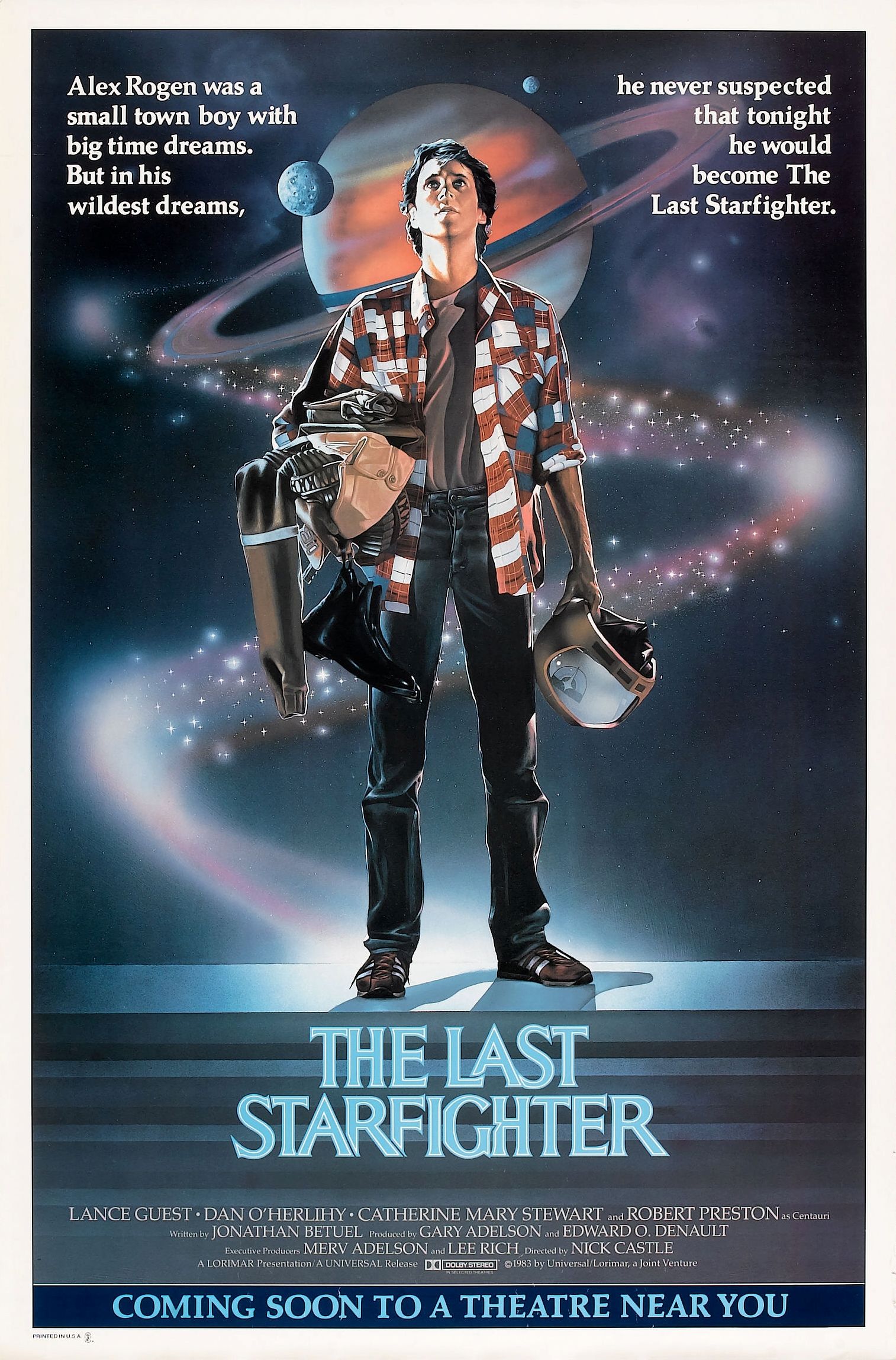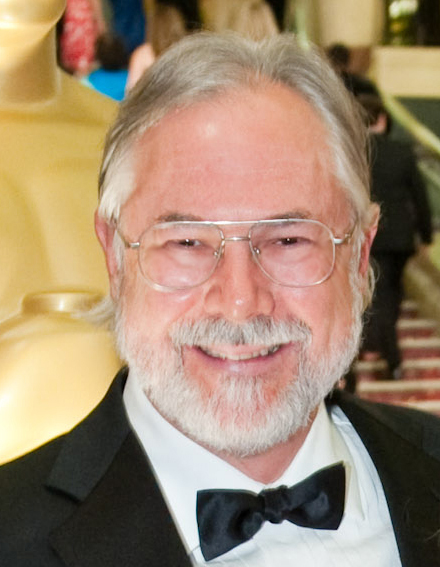
Title
Date
Description
Multiple Available
There are multiple entries on this date. You can modify the date range below to see them all.
Digital Productions
Established Date: Jan. 1, 1981
Deceased Date: Jan. 1, 1986
- All
- feature film
- production
- Digital Productions
- 2001
- Larry Yaeger
- Craig Upson
- technical director
- ILM
- software design
- animation
- pioneer
- Pioneer
- co-founder
- WestWorld
- FutureWorld
- Tron
- Apple
-
Digital Productions was formed in 1981 by Gary Demos and John Whitney Jr., having just left Triple-I right before the Tron work began production there. Elsa Granville was employee number three and the Director of Human Resources, Brad deGraf (Head of Production) and Larry Yaeger (Director/VP of Software) were hired very soon thereafter. Producers included Sherry McKenna and Nancy St.John. Jim Rapley and Art Durinski joined DP after having worked on Tron at Triple-I.
-
DP was one of those experiences like going away to college or to be in the military which stands out in your memory and establishes relationships in a short period of time that continue for many years after the 'main' experience. Imagine the setting. You start from say the LA airport and drive a short distance and find yourself in a 'bad' part of town, project housing and low-rent industrial warehouses. You turn into a dirty alley that runs beside …
Good times -
A Cray is a real headache. This one had like a $12,000 a month electric bill, and the maintenance and support bill for the "Crayons", the people who attended to it and kept it working came to like $50,000 a month. Its like a 747 jetliner. If its not in the air with seats full, you're losing money!
Cray story -
Bill Kroyer and Chris Baily animated Mick Jagger's Hard Woman rock video in 1985. The 4.5 minute long animation was Co-produced by Nancy St.John and Alan Peach. Because of the tught deadline, the team concentrated on the character animation, with rendering being restricted to extremely simplified tube-like forms.
Hard Woman -
I was in transition at the time, moving from the head of the modeling department (we called them designer/encoder's) into the land of the TD. TD's at DP did everything else besides modeling...animation, lighting, compositing. All proprietary. I laid out the Adobe town for the video, and handed the layout work over to my successor, Stephen Skinner, and I moved on to TD'ing my first project (I believe it was an HBO "behind the scenes" bumper. It was during that …
Meeting Mick Jagger -
In about 1985, CDC and Ramtek were both breaking up or going out of business themselves, and wanted out of the digital movie making business at any cost. Anxious to cut their losses, the board went along with a hostile takeover bid by Omnibus, breaking there agreement with Whitney Jr. and Demos. Backed by the Royal Bank of Canada, Omnibus arranged for a leveraged buy-out that would burden them with nearly $25 million in debt. Unable to prevent what they …
The Omnibus takeover -
DP's first major computer graphic project was for The Last Starfighter, $4.5 million worth of state-of-the-art high resolution CG animation. Beginning in Oct 83, Digital Productions traded in the 'older' Cray-1S for the very first Cray X-MP supercomputer. The Cray was fronted by a VAX 11/780 and was used to produce nearly 300 shots totaling 25 minutes of screen time. The team used E&S PS400's for modeling and IMI vector motion systems for motion preview with Ramtek frame buffers for …
The Last Starfighter -
 CGM - Episode 08 - The Last Starfighter & 2010
CGM - Episode 08 - The Last Starfighter & 2010 -
 Dune
Dune -
 DOA
DOA -
 2010
2010 -
 Paul Isaacs
Paul Isaacs -
 Labyrinth
Labyrinth -
 Kevin Rafferty
Kevin Rafferty -
 Emily Nagle Green
Emily Nagle Green -
 The Last Starfighter
The Last Starfighter -
 John Whitney Jr.
John Whitney Jr. -
 Brad deGraf
Brad deGraf -
 Information International Inc. (III, Triple-I)
Information International Inc. (III, Triple-I) -
 David Sieg
David Sieg -
 Gary Demos
Gary Demos -
 Larry Yaeger
Larry Yaeger
Good times
DP was one of those experiences like going away to college or to be in the military which stands out in your memory and establishes relationships in a short period of time that continue for many years after the 'main' experience. Imagine the setting. You start from say the LA airport and drive a short distance and find yourself in a 'bad' part of town, project housing and low-rent industrial warehouses. You turn into a dirty alley that runs beside a plastic products factory and come to a chain-link access control gate with concertina razor wire along the top. Once you are buzzed through the gate you are in a parking lot in front of a somewhat rundown warehouse. You enter the warehouse and suddenly it's a different world. Like a high tech artist's loft filled with digitizing tables, Technical Director Workstations and as you turn a corner and look to your left a glassed in raised floor computer room like something out of a super-secret government lab. The transition was amazing.
Cray story
A Cray is a real headache. This one had like a $12,000 a month electric bill, and the maintenance and support bill for the "Crayons", the people who attended to it and kept it working came to like $50,000 a month. Its like a 747 jetliner. If its not in the air with seats full, you're losing money!
Hard Woman
Bill Kroyer and Chris Baily animated Mick Jagger's Hard Woman rock video in 1985. The 4.5 minute long animation was Co-produced by Nancy St.John and Alan Peach. Because of the tught deadline, the team concentrated on the character animation, with rendering being restricted to extremely simplified tube-like forms.
Meeting Mick Jagger
I was in transition at the time, moving from the head of the modeling department (we called them designer/encoder's) into the land of the TD. TD's at DP did everything else besides modeling...animation, lighting, compositing. All proprietary. I laid out the Adobe town for the video, and handed the layout work over to my successor, Stephen Skinner, and I moved on to TD'ing my first project (I believe it was an HBO "behind the scenes" bumper. It was during that time that a bunch of us late-nighters met Mick Jagger. Fun time.
The Omnibus takeover
In about 1985, CDC and Ramtek were both breaking up or going out of business themselves, and wanted out of the digital movie making business at any cost. Anxious to cut their losses, the board went along with a hostile takeover bid by Omnibus, breaking there agreement with Whitney Jr. and Demos. Backed by the Royal Bank of Canada, Omnibus arranged for a leveraged buy-out that would burden them with nearly $25 million in debt. Unable to prevent what they saw as sheer folly, and also unable to afford a costly legal battle to protect their company, John Whitney Jr. and Gary Demos left to start up Whitney/Demos Productions. Digital Productions was renamed "Omnibus Simulation" in June of 1986, and declared bankruptcy (along with Omnibus and Abel) only 9 months later on April 13th of 1987.
The Last Starfighter
DP's first major computer graphic project was for The Last Starfighter, $4.5 million worth of state-of-the-art high resolution CG animation. Beginning in Oct 83, Digital Productions traded in the 'older' Cray-1S for the very first Cray X-MP supercomputer. The Cray was fronted by a VAX 11/780 and was used to produce nearly 300 shots totaling 25 minutes of screen time. The team used E&S PS400's for modeling and IMI vector motion systems for motion preview with Ramtek frame buffers for display. When Triple-I had wrapped the TRON work and decided not to continue in the CG film business, DP leased the Digital Film Printer (DFP) and hooked it up to on of the high speed channels of the Cray. The Cray driven DFP could scan 35mm film at four seconds a frame, and film out the 2000x2560 rendered images at twelve seconds a frame. For the first time, highly detailed computer generated images were integrated with live action as realistic scene elements, rather than as monitor graphics or deliberately 'CG' looking images. Gary Demos from the very beginning always had the drive to only produce the highest resolution, highest quality imagery possible. Kevin Rafferty(ILM) led the team that digitally encoded (modeled) many of the forms designed for the film by Ron Cobb. The technique used was to have top, front and side views of the model drawn orthographically on blueprint-like paper. A mouse/cursor (or puck) with cross hairs would then be used to input the lines of the drawing, one point at a time. Details even included little 3D digital stunt actors inside the Gunstar cockpit.
Digital Productions was formed in 1981 by Gary Demos and John Whitney Jr., having just left Triple-I right before the Tron work began production there. Elsa Granville was employee number three and the Director of Human Resources, Brad deGraf (Head of Production) and Larry Yaeger (Director/VP of Software) were hired very soon thereafter. Producers included Sherry McKenna and Nancy St.John. Jim Rapley and Art Durinski joined DP after having worked on Tron at Triple-I.
